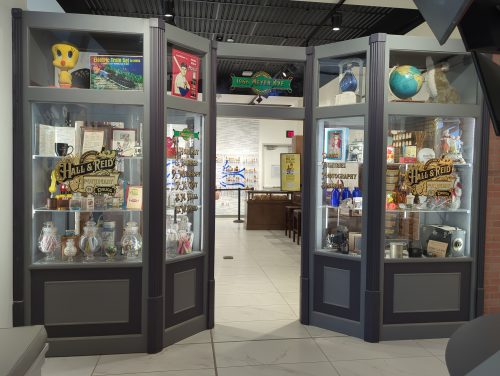
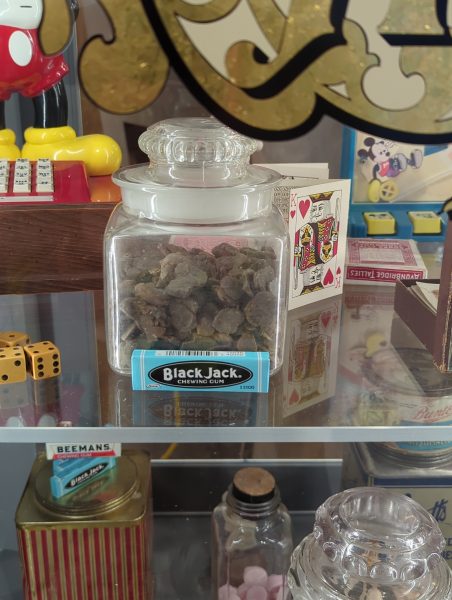
By Samantha Larned, El Inde Arizona
In the window of the replica drugstore, alongside lollipops, menus and other knick-knacks, is a package of Black Jack Chewing Gum and a candy jar of little brown dark wads.
Though the display is unlabeled, the chewed licorice-gum is a piece of Tucson history– discarded by American gangster John Dillinger and preserved at the Coit Museum of Pharmacy & Health Sciences on the University of Arizona Campus.
Originally known as the History of Arizona Pharmacy Museum, the Coit Museum of Pharmacy & Health Sciences was established in 1966 by pharmacist and collector Jesse Hurlburt, who donated his pharmacy artifacts to the UA College of Pharmacy to create the museum and became the first curator.
Among his donations was the Black Jack Chewing Gum.
Before his retirement, Hurlburt was the owner of the Owl Drug Store in downtown Tucson. The storefront had a food counter and Hurlburt noticed a group of men “dressed like Easterners” who came in a few consecutive days, recounted the museum’s director, Alexis Peregoy.
Hurlburt noticed one of the men was always chewing gum and stuck it to the underside of the counter when his food arrived.
Then one day in 1934, Hulburt opened the newspaper and saw that Dillinger and his gang were captured in Tucson at Hotel Congress downtown.
“There was a picture of him,” Peregoy explained. “And (Hulburt) said ‘that is the man that’s been sticking gum under the counter.’”
Being a hobby-historian, Hulbert scraped the gum from under the counter and put it into the jar where it remains today.
From a gangster’s gum to an early electrical therapy device to atomizers, kits and outdated instruments, there are many medical oddities on display at the newly-renovated museum.
“You’ll see things that are bizarre to think about,” said Katie Collins, the museum visitor services assistant.
Collins, a UA pharmacy student, has worked at the museum for about four months.
“A lot of people, when they hear pharmacy they just think of CVS,” Collins said. “I think a lot of people don’t realize how far we’ve come in pharmacy and the history that’s behind it. So when you’re looking through here you can really see wow, we’ve actually made so many advancements in this and we are really lucky to have what we have today.”
Closed in 2021 for expansion, the museum reopened in October in the Skagg Pharmaceutical Sciences Center, located in North University on the UA campus.
Past and Present
The museum collection was spread throughout the College of Pharmacy until 1982, when it moved to the Skaggs Pharmaceutical Sciences Center. Even then, the museum was split between different areas and guests had to book a tour with the curator for a full tour, Peregoy said.
In 2018, UA alumnus R. Ken Coit invested $50 million in the College of Pharmacy, including part for the museum. The college was renamed the R. Ken Coit College of Pharmacy in his honor.
Installation of the updated museum began in 2021 and the grand opening was last October, in conjunction with the 75th anniversary of the College of Pharmacy.
Now, with a centralized home, the museum can accurately track visitors.
Collins said the museum sees “all different sorts of people,” including UA faculty and staff, avid museum-goers, medical field retirees and college, high school and senior center tours.
Some guests recognize pieces from their own childhoods, which have since fallen out of use, Collins explained.
“There’s something for everyone here,” she said. “And I think people really connect with that and they remember.”
In addition to the many scheduled tours, the museum sees an average of 200 walk-in guests per month.
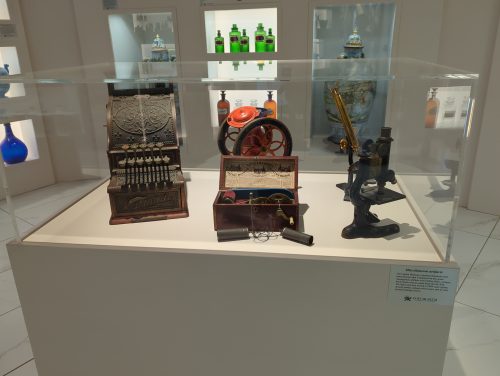
From Antique to Modern
Since the original donation from Hulburt, the museum’s collection has grown.
The most prestigious acquisition is the collection of artifacts from the Upjohn Pharmacy, donated by Disneyland in 2007.
Running the length of the museum is a series of screens and interactive displays, including a movable timeline of medical history, a selection of calls to the Arizona Poison and Drug Information Center, and the 2021 Telly Award winning “Great Moments in Pharmacy” exhibit.
At the museum’s center is a massive digital screen and a tree of video monitors, which share the space with a wall of steampunk-looking devices and the drugstore façade.
The contrast between the modern and historic is further cemented after stepping into the faux-shop. Wood furniture holds vintage bottles, papers, products and typewriters, as well as interactive screens— all against stark white walls and tile flooring.
The back wall reads “BIG PHARMA” and it details the consolidation of 19th- and 20th-century drug companies that created the modern pharmacy industry.
The chart serves to bridge the gap between the two pharmaceutical worlds the museum has presented.
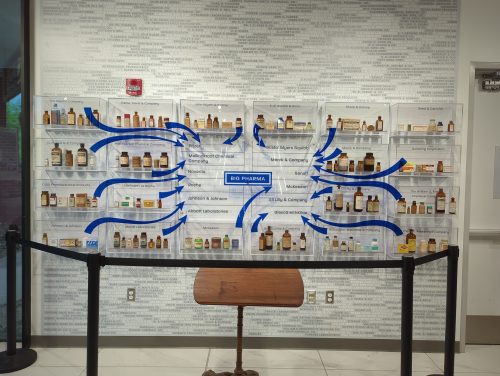
Pharmacy student Adrian Acuna visited the old museum and was impressed with the renovation.
Adrian’s wife, Giovanni Acuna, said she was “super amazed,” on a recent first visit with their 5-month-old Elias Acuna. His eyes were wide, taking in all of the sights, sounds and interesting colors and shapes.
The Future
Just six months after reopening, Peregoy said the museum has big plans for the future, such as bilingual signage, increased publicity, possible Saturday summer hours, refreshing the mini exhibits that remain outside of the museum and making those areas more accessible and welcoming.
Peregoy is cataloging donated items and due to the backlog and limited space, she said she has been selective in what the museum accepts.
“I probably hear from somebody at least once a week about a donation,” she explained. “So there’s a lot of interest in donating materials to the museum.”
She aims to expand the collection’s obscure objects like leech jars, controlled substances and pharmacy items including ice cream machines and soda fountains.
Along with the renovation, the museum also rebranded and expanded beyond pharmacy, to include more artifacts related to health sciences.
“There’s a lot of rich history,” Collins said. “And I think it’s important to recognize the people who are working in this field and their legacy.”
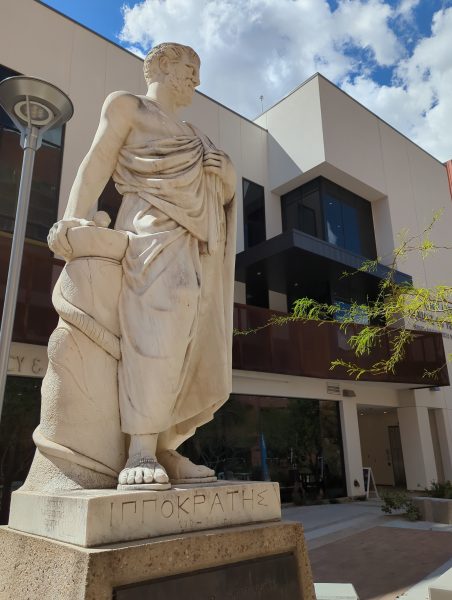
The museum is located at the R. Ken Coit College of Pharmacy, Skaggs Pharmaceutical Sciences Center room 260. Museum parking is available on the north side of Drachman Street. The museum is open Tuesday through Friday from 10 a.m.-3 p.m. and admission is free.
El Inde Arizona is a news service of the University of Arizona School of Journalism.
